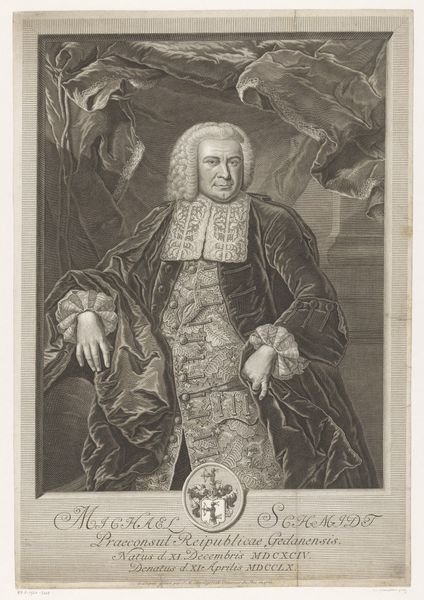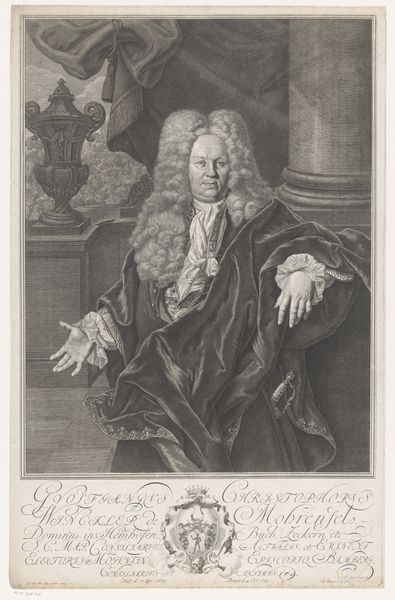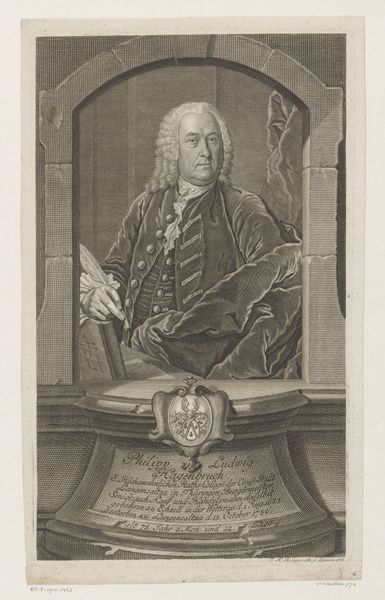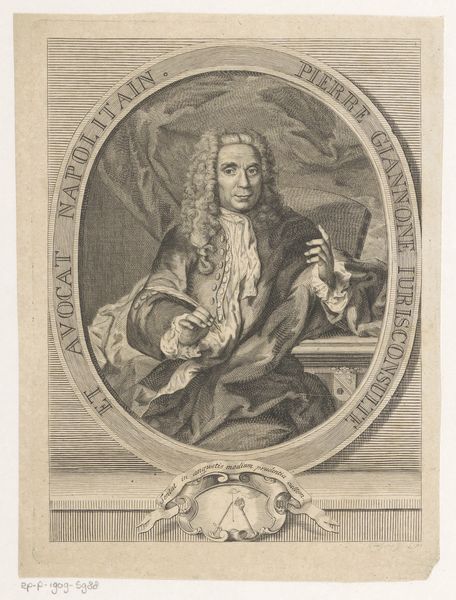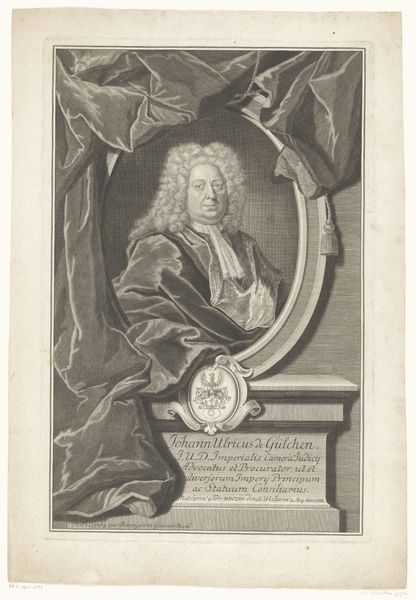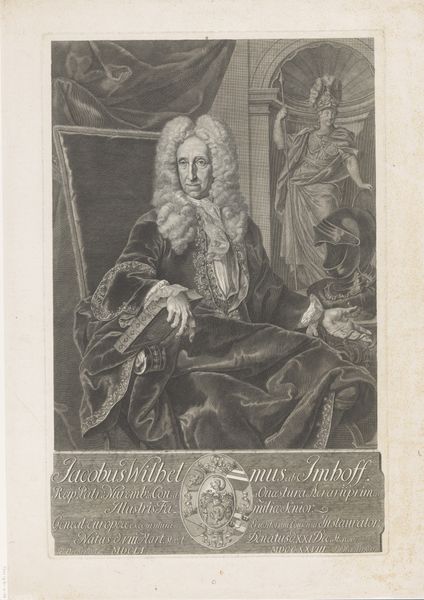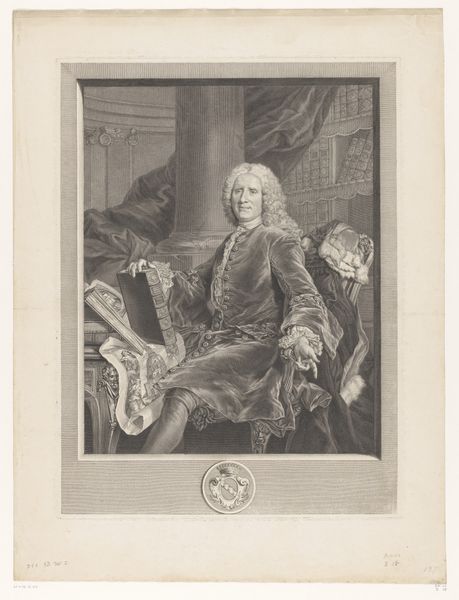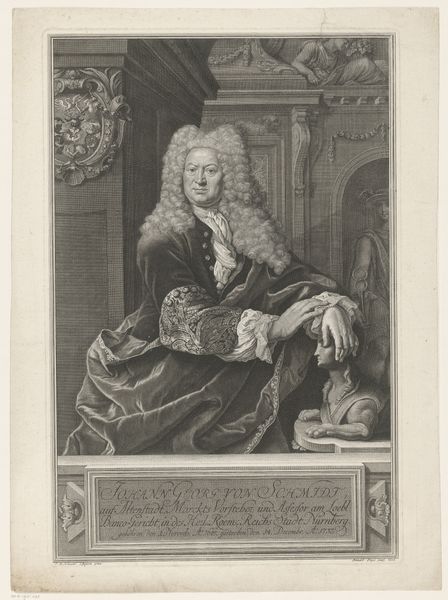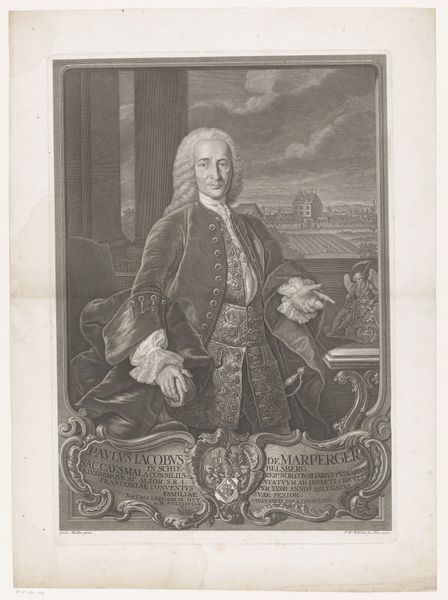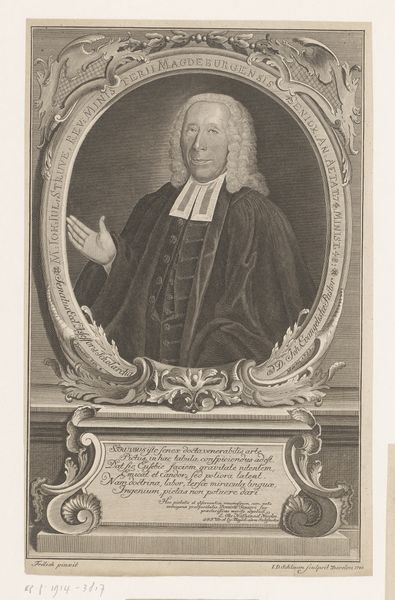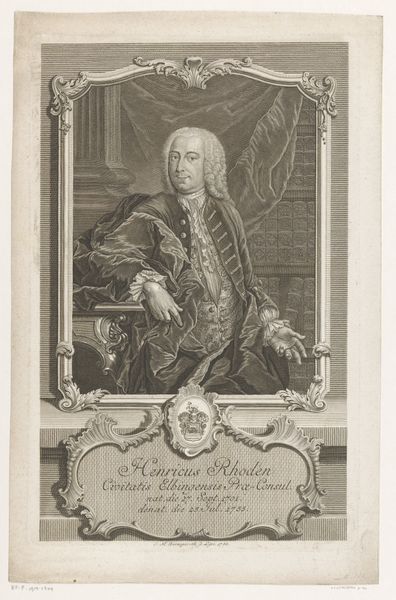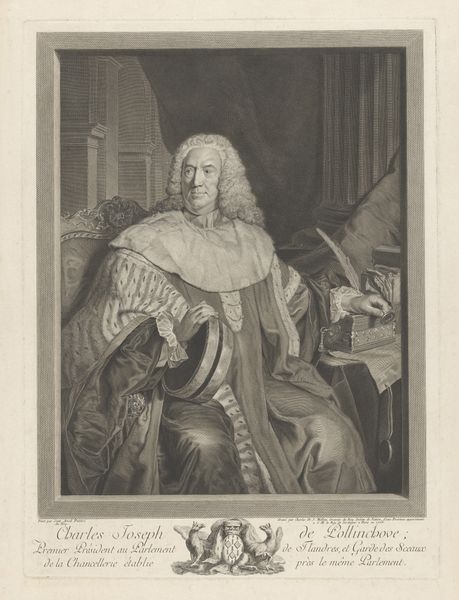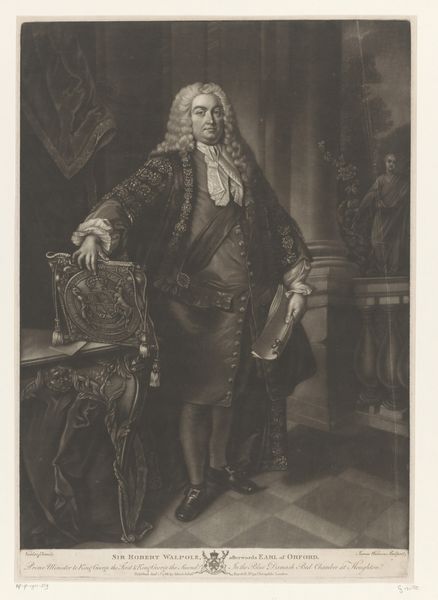
engraving
#
portrait
#
baroque
#
history-painting
#
engraving
Dimensions: height 500 mm, width 335 mm
Copyright: Rijks Museum: Open Domain
Curator: Here we have a finely wrought engraving from 1736. The title is "Portret van Philipp Caspar Pfannenstiel," and it’s currently held at the Rijksmuseum. What strikes you immediately about this print? Editor: The level of detail! And there's a certain...theatricality to the composition. The heavy drapery, the column, even the sitter's pose—everything suggests power and importance. I’m curious about the symbols and what they’re communicating here. Curator: Let's consider the context. Philipp Caspar Pfannenstiel was a prominent figure of his time. Prints like this served as public affirmations of status and power. The details, as you noticed, were crucial. His coat, for example, likely signifies his rank or affiliations. Editor: Right, the symbolism of the clothes. And I find the pose particularly compelling. It's meant to convey effortless authority, but there's almost a hint of self-awareness, a performance for the viewer. Also the ornate crest beneath with the figures adorning the escutcheon really bring out his high place in the societal hierarchy. Curator: I think that's a shrewd observation. The performative aspect of portraiture was absolutely central in that era. It speaks to the societal expectations surrounding those in positions of power and this medium was meant to portray wealth. The print format also ensured a wider dissemination of that carefully crafted image. The Baroque emphasis on lavishness of textures as can be seen on his coat adds a dimension of visual richness too, and further solidifies the sense of opulence on display. Editor: And the symbolic language wouldn't have been lost on contemporary viewers. The column suggesting strength and the flowing drapery implying majesty... They understood this visual code, and these symbols spoke volumes. Looking closely, the rendering feels somewhat idealized. The facial lines appear smoothed, the gaze direct but benevolent. Curator: Indeed, portraits were never mere reproductions; they actively shaped public perception and functioned within systems of patronage. He, or those commissioning the image, surely intended for him to be seen this way—benevolent and distinguished. Editor: It's a reminder that every image, no matter how seemingly straightforward, operates within a web of power dynamics and cultural codes. It certainly leaves you to question which elements still reverberate in present times!
Comments
No comments
Be the first to comment and join the conversation on the ultimate creative platform.
